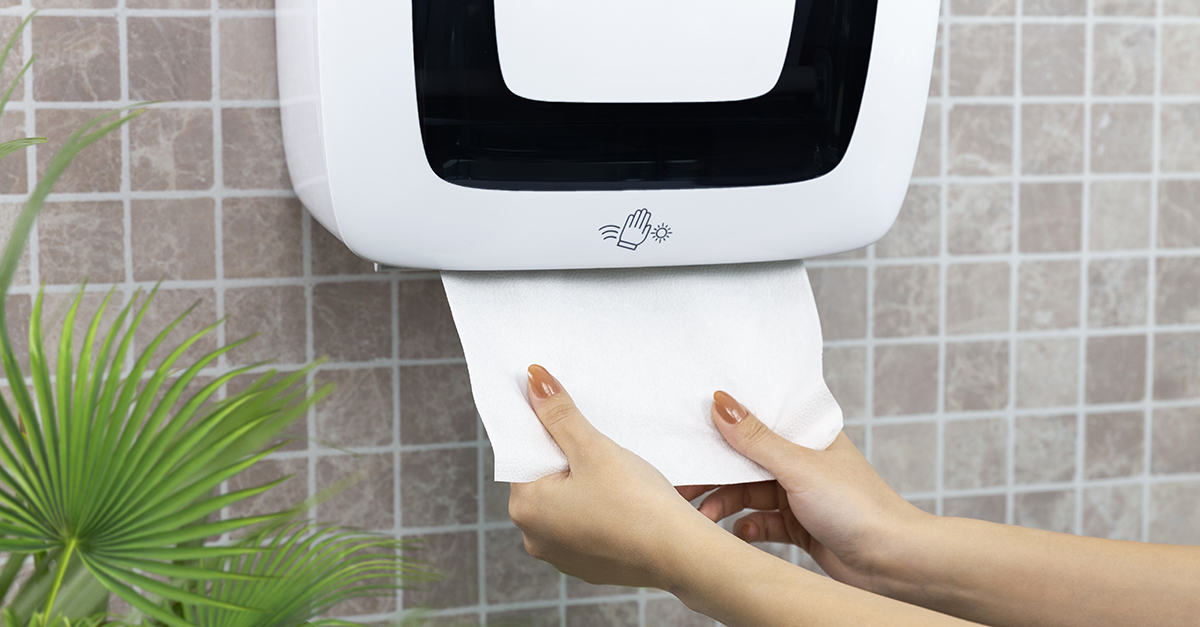Dispensers for towels, toilet paper, and soap first appeared in public restrooms more than a century ago. Initially, they served as repositories for necessary restroom products.
As the concept of human-centered design took root in the 1950s, dispenser design evolved to meet consumer needs for hygiene and ease of use. Thirty years later, with the introduction of behavior-based design in the 1980s, automated and then touchless dispensers came to market, offering consumers unparalleled hygiene and ease-of-use benefits.
Switching to user-based design
More recently, the best traits of human-centered design and behavior-based design merged into what is commonly referred to as user-based design. This design approach requires a deep understanding of a product user’s needs and prioritizes innovations to solve their pain points. It also recognizes that a product may have more than one user, as with restroom dispensers.
Both consumers and custodians use restroom dispensers, although their interactions with the fixtures are very different. Consumers are literal users, utilizing the products the dispensers hold.
Custodians ensure the dispensers are stocked and in working order.
Meeting varying needs
Although their reasons for interacting with dispensers differ, consumers and customers often have similar product wants and needs, including simplicity, efficiency, and reassurance. But even when those needs diverge, intuitive user-based design can often identify a single dual-purpose solution. The following dispenser design attributes address the needs of both consumers and custodians.
Jam-free dispensing: Neither user group wants to encounter a paper towel dispenser that’s stocked but not working. Consumers don’t want to wander around a restroom with wet hands
looking for paper towels; they want to get in and out quickly. Custodians also don’t want a jammed dispenser to delay them from performing higher level tasks.
Reliable, jam-free dispensing systems mean fewer worries for both user groups. And when dispensers need refilling, an intuitive design allows custodians to complete the task efficiently.
At-a-glance communication: To a consumer, nothing is worse than discovering a toilet paper dispenser is empty when it’s too late to do anything about it. However, custodians don’t have the time it takes to open every paper towel, toilet paper, and soap dispenser to determine product levels or to ensure the dispensers are performing properly.
Indicator lights that are easy to see and understand—green for stocked and working, red for empty or not functioning—allow consumers to navigate the restroom experience quickly and easily and minimize disruption and downtime for custodians.
Touchless automation: Touchpoints have the potential for cross-contamination, particularly in public restrooms. Touchless automated dispensing helps provide the hygienic restroom experience consumers want by eliminating their need to touch a dispenser or to touch more product than they use.
For custodians, the less a consumer touches a restroom fixture, the less potential occurs for damage, smudges, dirt, and grime. Less damage to fix and fewer smudges to clean means improved
custodian productivity.
Rounded corners and smooth surfaces: Corners, crevices, and seams on restroom dispensers provide collection points for germs, water, dirt, and dust. For consumers, perception is reality. Dispensers with softer edges and fewer seams are more hygienic and look cleaner, giving consumers a level of reassurance that helps minimize anxiety. Eliminating potential repositories for germs and dirt significantly reduces custodians’ cleaning time and effort.
Closed soap systems: A closed soap system includes a hygienically sealed nozzle and soap reservoir that are part of a disposable refill. For consumers, such soap systems not only support
their need for hygiene by eliminating the potential for soap contamination, but they also look cleaner, which helps boost consumer confidence. For custodians, closed systems are easy to refill and
mess-free.
Empathizing with all users
Designing dispensers from a place of empathy has a positive ripple effect that extends beyond consumers and custodians to the facility itself. Happy consumers are less likely to lodge complaints or write negative social media posts and are more likely to become loyal customers. Happy custodians are more motivated and effective and less likely to seek employment elsewhere.
As facilities increasingly look to reduce operating costs, manage labor shortages, increase hygiene, and improve revenue, they quickly realize that dispenser design matters.



